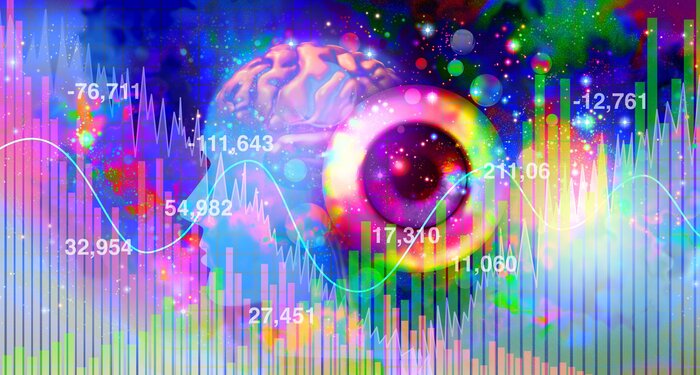Have You Ever Wondered What's Behind the Images You See?
You scroll through your social media feed and come across an image of a vase.
It looks ordinary, right? But what if I told you that this image could subtly influence your thoughts, making you think of a cat, even though there's no cat in sight?
This isn't a trick question but a real phenomenon uncovered by Deepmind's latest research. They've found that AI-generated watermarks in images can tweak our perception in ways we don't even realize.
Now, you might be thinking, "How does this affect me or my business?"
Well, as a marketer or a business owner, understanding the power of AI could be your secret weapon in a world where grabbing and holding attention is gold.
How AI Alters What We See
You've seen those optical illusions, right? Where your brain sees something that's not quite there?
Well, it turns out AI can create a similar effect, but in a much more subtle way. Deepmind's study revealed that by tweaking just a few pixels in an image – changes so minute that you wouldn't notice them – AI can make us perceive things differently.
These are called adversarial perturbations, and they're like a secret code between the image and the AI.
But here's where it gets interesting for you.
While these changes are designed to trip up AI, they also have a sneaky effect on us humans. It's like a magician's sleight of hand, but in the digital world.
And the implications are huge.
Think about it: What if your marketing images could speak directly to your audience's subconscious, nudging them towards your product or message without them even realizing it?
Subtle Shifts, Significant Impact
How can these findings from Deepmind's study changing things for your marketing efforts?
Imagine being able to influence your audience's perception, ever so slightly, to align more closely with your brand's message. It's about fine-tuning the visual elements in a way that speaks directly to the subconscious.
For instance, tweaking an image in your next ad campaign might make your product more appealing or memorable, without viewers even knowing why they're drawn to it. It's not about deception; it's about enhancing perception.
This is where ethical creativity comes into play, blending art and science to hit that marketing sweet spot.
However, there's a catch.
With great power comes great responsibility. The ethical implications are significant. It's crucial to tread this path carefully, ensuring that your marketing strategies respect your audience's trust and integrity.
So, how do you strike the right balance between innovative marketing and ethical considerations?
When Perception Meets Reality
Let's paint a picture with a hypothetical scenario.
Imagine you're launching a new product – say, a line of eco-friendly water bottles. You've got your standard marketing images: the bottle in nature, a person drinking from it, the usual stuff.
But here's where we add a twist with the power of AI.
Using the principles from Deepmind's study, you slightly alter the images.
To the naked eye, they're just beautiful pictures. But these images are now fine-tuned to resonate more deeply with your audience's environmental consciousness. Perhaps they subconsciously associate your bottle with feelings of positivity and eco-friendliness, even if they can't quite put their finger on why.
The result?
Your campaign doesn't just show a product; it connects on a deeper level, tapping into the values and emotions of your audience.
But how do you measure the success of such a campaign? And what does this mean for the future of your marketing strategies?
Keeping AI Ethical
With AI's ability to subtly influence perception, you've got a powerful tool at your disposal. But how do you use it effectively without crossing ethical boundaries?
First, it's about understanding your audience deeply. What drives them? What are their values? AI can help analyze data and trends, but the human touch is irreplaceable in interpreting these insights. It's a dance between technology and human intuition.
Then, it's about applying these insights creatively.
It's not just about altering images, but crafting a narrative that resonates. Your marketing should tell a story, one where your product or service fits seamlessly into your customers' lives.
And finally, it's about constant learning and adapting.
The AI landscape is ever-evolving, and so should your strategies. Keep experimenting, measuring, and refining. Remember, AI is a tool, not a magic wand. It amplifies your efforts but doesn't replace the need for smart, ethical marketing practices.
For you, the forward-thinking marketer or business owner, this is an invitation to innovate, to think outside the box, and to use technology to create marketing campaigns that don't just sell products but tell stories and evoke emotions.
The goal isn't to manipulate, but to enhance and resonate. It's about using AI responsibly to create marketing that's not only effective but also ethical and respectful of your audience.
So, what's your next move? How will you leverage AI to take your marketing to the next level?

